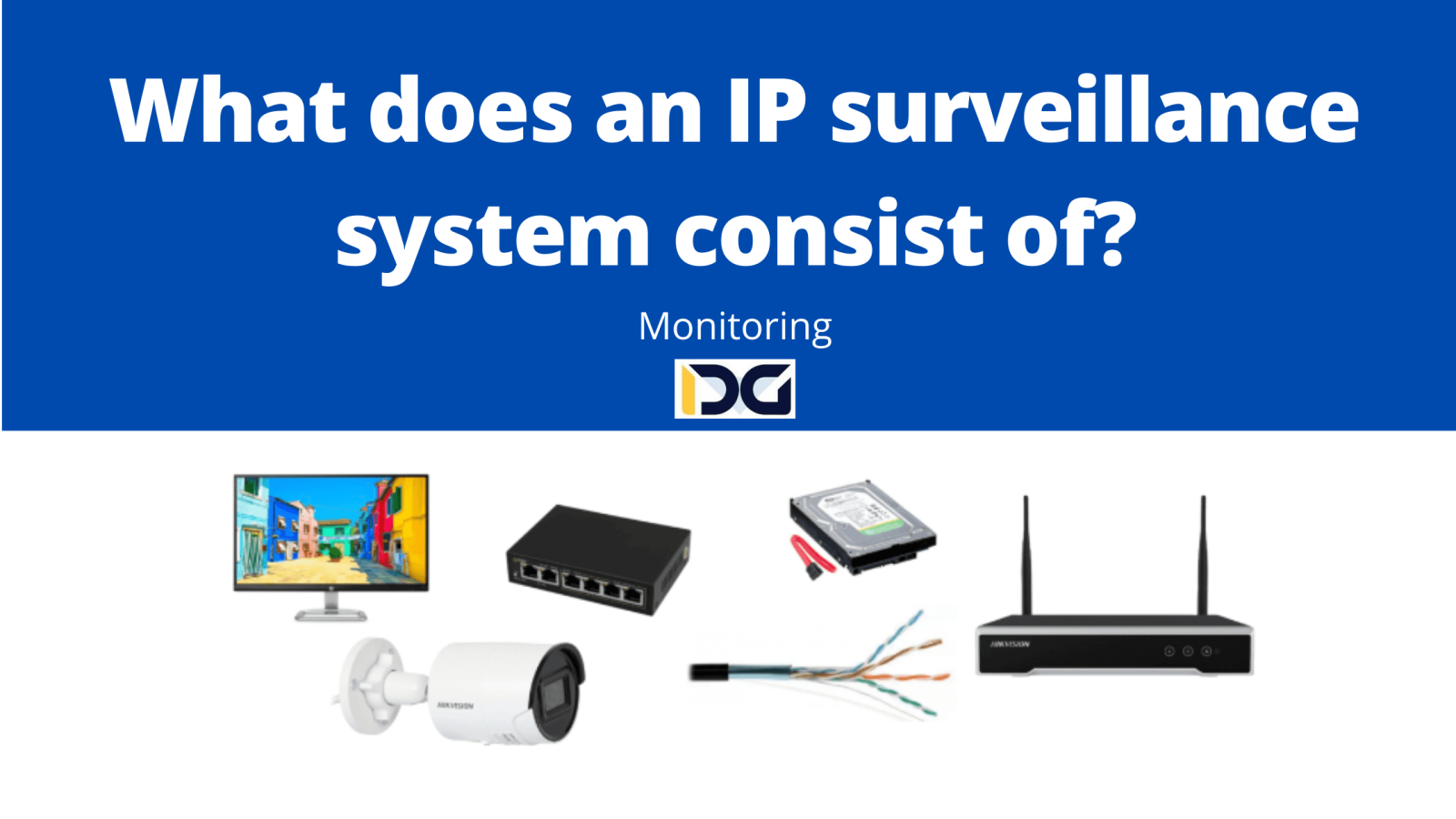
What does an IP surveillance system consist of?
An IP surveillance system consists of two main components: IP cameras and a Network Video Recorder (NVR). An IP camera is a device that is connected to an IP network, while an NVR is a device designed to record and store video footage from IP cameras.
IP Camera
IP cameras are available in various sizes and shapes, with dome and bullet cameras being the most common types. They can be used for both indoor and outdoor surveillance. IP cameras often have built-in features such as motion detection and the ability to send notifications to a mobile device or email. They can also be integrated with other devices such as motion sensors or sirens. Each IP camera operating in the network has its own unique IP address, which is used to connect it to the NVR.
Network Video Recorder (NVR)
An NVR is a device used to record and store video footage from IP cameras. NVRs come in different configurations and can support anywhere from four to over 100 IP cameras simultaneously. They have built-in hard drives or support external storage devices. As a network device, an NVR also has its own unique IP address. Some NVRs may also include a built-in PoE (Power over Ethernet) switch for camera communication and power supply.
PoE Switch
If the IP NVR does not have a built-in switch, an external PoE switch is required to connect the IP cameras to the NVR. The PoE switch acts as an intermediary between the cameras and the recorder.
When designing the wiring layout for an IP surveillance system, it is important to consider that the distance between the IP cameras and the NVR or switch should not exceed 100 meters. However, with Dahua’s ePOE (extended Power over Ethernet) technology, this distance can be extended up to 300 meters at 100Mbit speed or up to 800 meters at a limited transmission speed of 10Mbit.
Open this in UX Builder to add and edit content
IP monitoring cabling
An IP monitoring system relies on network cabling, typically using computer Ethernet cables (twisted pair). It can also utilize fiber optic cables for certain segments. This cabling connects the cameras to the switch or recorder.
In IP monitoring, existing computer network cabling can be leveraged, which is often preferred as it reduces the overall cost of the IP monitoring cabling installation.
Wireless IP Monitoring
In wireless IP monitoring systems, which are also IP-based systems, the use of computer cabling is not required. The only exception is the cabling needed for access points, which effectively act as switches and extend the range of WiFi cameras.
